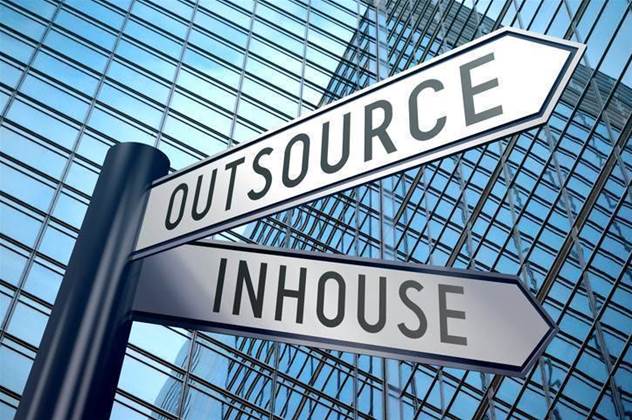Origin Energy Unveils Australia’s Initial Vehicle-to-Grid (V2G) Subscription
We independently review everything we recommend. When you buy through our links, we may earn a commission which is paid directly to our Australia-based writers, editors, and support staff. Thank you for your support!

Launching Australia’s Initial V2G Subscription Service
Origin Energy, in partnership with BYD and StarCharge, has initiated Australia’s groundbreaking vehicle-to-grid (V2G) electric vehicle (EV) subscription pilot. This cutting-edge service combines a bi-directional charger with free home charging.
Quick Overview
- Origin Energy collaborates with BYD and StarCharge to introduce Australia’s inaugural V2G subscription pilot.
- The pilot features a bi-directional charger and complimentary home charging.
- Aims for 50 participants starting in 2026; expressions of interest are currently accepted.
- Bundled with the BYD Atto 3 SUV and the StarCharge V2G Halo charger.
- Subscribers gain access to Origin’s Virtual Power Plant for automated charging management.
- Possible savings of up to A$2,500 compared to fuel expenses.
- Flexible monthly subscriptions available starting below A$800 each month.
Comprehending Vehicle-to-Grid Charging
Vehicle-to-grid technology enables electric vehicles to act as portable batteries. By charging during off-peak times, such as sunny afternoons, EVs can send surplus energy back to the grid during peak hours, earning credits and diminishing fossil fuel dependency. This benefits both personal energy bills and the overall national energy system.
“Vehicle-to-grid charging represents a transformative shift that has the potential to accelerate the EV market in Australia by enabling EV drivers to return electricity to the grid from their vehicle and receive compensation for it. We are thrilled to spearhead this innovative technology with the introduction of this pioneering vehicle-to-grid package that simplifies access to the advantages of free charging for drivers.” Chau Le, General Manager, E-mobility, Origin.
Essential Features of the V2G Package
Automated Complimentary Home Charging
Origin’s advanced technology oversees the charging process, supplying up to 320kWh of free energy each month, adequate for average Australian driving demands.
Two-Way Power Flow
Charge your EV utilizing the grid or solar energy and send surplus energy back during peak hours, transforming your EV into a lucrative grid resource.
Flexible Subscription Benefits
Month-to-month subscriptions provide flexibility without long-term commitments, incorporating FBT exemptions via salary packaging, currently assisting over 1,600 Origin EV users.
Limited Trial Participation
The trial is available to only 50 customers in 2026. Interested candidates are encouraged to express their interest now to secure a spot on the waitlist and participate in shaping the future of V2G in Australia.
Automated Financial Benefits
Origin’s Virtual Power Plant streamlines the entire operation, stabilizing the grid and lessening dependence on fossil fuels during high demand periods while rewarding EV owners.
“The ideology of V2G and its implications for our Australian clientele aligns seamlessly with our mission to deliver ‘innovation for an improved life’ and to ‘cool the earth by 1 degree’. BYD is eager to collaborate with Origin to advance this technology in Australia, redefining Electric Vehicle ownership and illuminating that an Electric Vehicle encompasses more than just transportation.”Sajid Hasan, Chief Product Officer, BYD Australia.
“Vehicles are evolving beyond mere components of the transport network – with EVs and bi-directional charging technology, they are becoming integral to the energy network. Through V2G, every vehicle turns into a mobile energy resource. We are excited to contribute to this partnership with Origin and BYD to hasten the uptake of V2G technology in Australia.” Kouki Xiang, CEO, StarCharge APAC.
Accessibility
Origin is currently inviting expressions of interest for the trial, set to commence in 2026. The trial is confined to 50 participants, with specific criteria for eligibility. For further details, visit Origin Energy’s V2G Bundle Trial Page.
Conclusion
The launch of Australia’s first vehicle-to-grid subscription service by Origin Energy signifies a major advancement in the electric vehicle landscape. By converting EVs into dynamic energy resources, this initiative not only grants economic advantages to users but also promotes a more sustainable energy infrastructure across the country.
Q: What is the main advantage of V2G technology?
A:
V2G technology permits electric vehicles to transfer stored energy back to the grid, lessening reliance on fossil fuels while providing drivers with financial incentives.
Q: How can interested participants engage in the trial?
A:
Individuals may express their interest in the trial by accessing the Origin Energy website and submitting their details for consideration.
Q: What are the financial advantages of enrolling in the V2G subscription?
A:
Subscribers can save as much as A$2,500 per year in comparison to fuel expenses, in addition to enjoying the benefits of automated, complimentary home charging.
Q: What are the eligibility requirements for the trial?
A:
Specific eligibility criteria exist, and further information is accessible on the Origin Energy website. The trial is capped at 50 participants in 2026.
Q: Which vehicle and charger are part of the package?
A:
The package includes the BYD Atto 3 SUV paired with the StarCharge V2G Halo bi-directional charger.
Q: How does V2G technology influence the national energy grid?
A:
V2G technology enhances the grid by supplying additional energy during peak demand periods, thereby decreasing the necessity for fossil fuel-based power generation.










